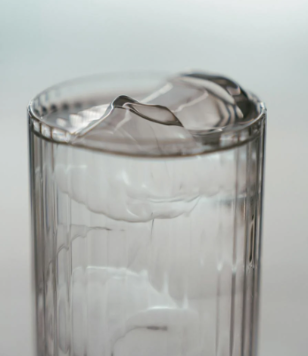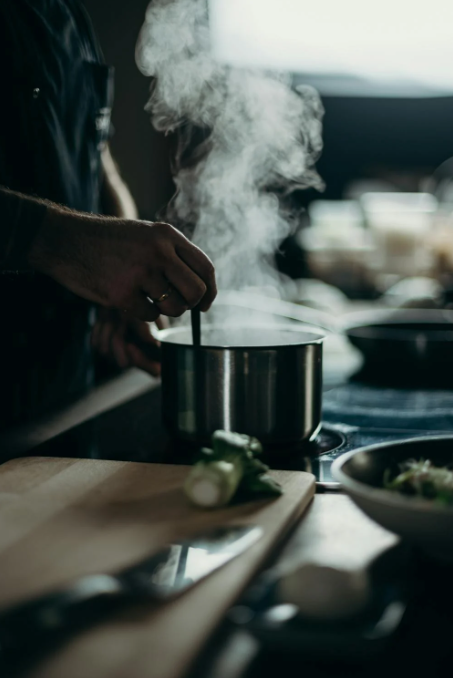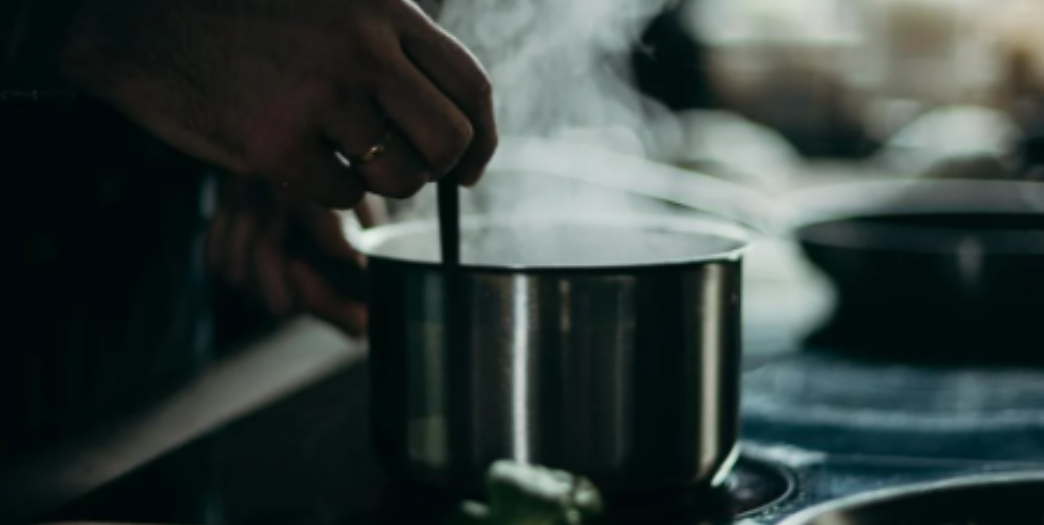When and How to Calibrate a Bimetal Thermometer?
In food preparation every degree matters. Whether it is making sure meat is thoroughly cooked through or storing perishable foods in the correct way, temperature matters, and accuracy of the equipment is important. In the food industry and at home kitchens, ensuring food safety is of utmost importance. Many instances of foodborne illness can be traced back to improper temperature control during food handling and storage. One of the key tools in ensuring proper temperature control is a bimetal thermometer. Proper calibration of the thermometer is crucial but luckily it is simple. Knowing how to calibrate your thermometer ensures that temperature measurements are accurate, reducing the risk of contamination and food poisoning. In addition, not only knowing how to calibrate but also when to calibrate bimetal or bimetallic thermometers is also important. There are many instances in which you must recalibrate, otherwise false readings can occur. For example, after impact or damage.
There are two ways in which you can calibrate bimetal (bimetallic) thermometers: with ice or with boiling water, which are known as The Ice-Water Method and the Boiling-Water Method. This Blog will take you through the process of methods both step-by-step.
For anyone working in food service, food production, or any aspect of the food industry, adhering to HACCP standards is essential. HACCP stands for Hazard Analysis Critical Control Points, and it defines control points where potential hazards could arise, and temperature is a primary factor in maintaining safe food practices. In this blog, we’ll explain why calibrating your thermometer is important, when it should be done, and how you can do it to ensure safe food handling and improve compliance with UK, US and International regulations and like those held up by organisations the FDA and the FSA.
Why a bimetal thermometer is crucial? What is the Danger Zone?
The Danger Zone is a great guideline to adhere to. The temperature danger zone is between 40°F and 140°F or 8°C to 63°C where harmful bacteria like Salmonella, E. coli, and Listeria thrive. Therefore, a thermometer is used to make sure food is not kept within this zone for a long period of time, as bacteria in this zone multiply much quicker.
Why Should You Calibrate Your Bimetal Thermometer?
Calibrating your thermometer is important for ensuring accurate and reliable measurements. Over time, thermometers can drift from their original calibration due to wear, environmental factors, or regular use. A mis-calibrated thermometer can lead to faulty readings, which can compromise food safety, product quality, or experiment results. Regular calibration helps prevent these issues, ensuring that your probe thermometer consistently delivers precise measurements, improving the reliability of your outcomes and the safety of your processes.
When Should You Calibrate Your Bimetal Thermometer?
Knowing when to calibrate your bimetal thermometer is as important as knowing how to calibrate it. Regular calibration will ensure that your thermometer continues to give accurate readings and trouble-free measurement. In turn this makes sure your food is cooked safely and has the desired taste. Here’s when you should calibrate your bimetal thermometer:
1. Before Using a New Thermometer
Before you start using a new bimetal thermometer, it’s essential to calibrate it to ensure it gives proper temperature readings. Even if the thermometer appears to be in perfect working order, it’s always best to check its accuracy before relying on it in food preparation.
2. After Impact or Damage
If your thermometer is dropped, damaged, or exposed to extreme temperatures, then you should recalibrate it. These types of impacts on equipment can alter the calibration, which can directly affect the temperature readings. When dropped or subjected to impact, thermometers can lose accuracy and give incorrect measurements. Its good to recalibrate just in case, as you don’t want your food to be unknowingly in the temperature danger zone, as even a few degrees out can make a large difference.
3. Periodically During Routine Maintenance
It is recommended to calibrate your thermometer as part of your routine cleaning and equipment maintenance schedule. Ina a professional setting calibration should be performed weekly, monthly, or at least quarterly, depending on the frequency of use and how critical temperature control is in your operations. For at home users, it depends on how frequently you use a thermometer. Regular calibration will ensure that your thermometer continues to provide accurate and safe readings and remains compliant with HACCP standards. It is a good idea to keep a calibration schedule or timetable to ensure this, especially if you are using the thermometers in a professional environment.
4. If You Suspect Inaccurate Readings
If your thermometer consistently gives readings that seem incorrect, it’s time to recalibrate it. Even the most reliable thermometers can develop small inaccuracies over time due to wear and tear. By checking and calibrating your thermometer at the first sign of inconsistency, you can prevent temperature mismanagement, ensuring that food stays within the safe temperature range.
How to Properly Calibrate a Bimetal Thermometer: Step-by-Step Guide
Calibrating your bimetal thermometer is a simple yet important process that directly impacts food safety. Two primary methods are commonly used: the ice-water method and the boiling-water method. Here’s how they both work:
1. Ice-Water Method (Most Common)

This method is ideal for calibrating at 32°F (0°C), which is the freezing point of water, and is often used in the food industry. It is probably the most used way to calibrate bimetal thermometers.
Steps:
- Prepare the Ice-Water Mixture: Fill a container with crushed ice and cold water, then stir to create a uniform mixture.
- Insert the Thermometer: Place the thermometer’s probe into the ice-water mixture. Ensure the sensor area on the probe is fully submerged. Be careful that the stem of the thermometer is not touching the sides or bottom of the container, in order to avoid false readings.
- Wait for a Stable Reading: Wait for around 30 seconds and the thermometer should stabilize and read 0°C or 32°F if it is calibrated correctly. However, it may sometimes take longer.
- Adjust the Calibration Nut: If after waiting for a few minutes the thermometer does not read 0°C or 32°F, use the calibration nut at the top of the thermometer to adjust the dial. Then use a small screwdriver to fine-tune the setting.
- Confirm Calibration: Double-check to ensure the thermometer now reads accurately at 0°C or 32°F. Just to make sure your thermometer is accurate you can try it out at different temperatures, you may also use another calibrated thermometer as reference, and check they are both reading the same temperature.
2. Boiling-Water Method (For High-Temperature Calibration)

This method is used for calibrating thermometers at higher temperatures (100°C or 212°F).
Steps:
- Boil Water: Bring a pot of water to a rolling boil.
- Insert the Thermometer: Fully Submerge the thermometer’s probe into the boiling water. Ensure the thermometer is not touching the sides or bottom of the pot, this will alter the accuracy of the readings.
- Check the Boiling Point for your area: Altitude affects the boiling point of water. This step is crucial but is easy to forget. Boiling point at sea level is 100°C or 212°F. The thermometer should read 212°F (100°C) at sea level. But for each 500ft elevation the temperature boils at 0.5°C lower. So, for higher altitude places that are above 5000ft like Mexico City, Xining and Denver it is very important to check. For example, Addis Ababa the capital of Ethiopia is at 2500m above sea level or 8202ft which means water boils at just 91°C (195.8°F). These 9 degrees can make a very substantial difference
- Wait for a stable reading: Wait for around 30 seconds to 2mins for your thermometer to reach a stable reading. The temperature should read 212°F (100°C) at sea level, remember to check the boiling point in your area.
- Adjust Calibration Nut: If the thermometer reading is off, adjust it to the boiling point using the calibration nut. You can also use a screwdriver or another tool to make the adjustments more secure.
- Confirm Accuracy: After adjusting, check to make sure the thermometer gives an accurate reading. Just to make sure your thermometer is accurate you can try it out at different temperatures, you may also use another calibrated thermometer as reference, and check they are both reading the same temperature.
Most Common Mistakes when Calibrating Bi-Metal Thermometers

Despite calibration of thermometers being a simple process, there are many small mistakes that have big effects on accuracy that are very commonly made. Their importance cannot be underestimated. In the food industry, temperature control is one of the most critical elements for ensuring food safety. Whether you’re cooking, storing, or transporting food, temperature must be carefully monitored to prevent contamination and food poisoning. One of the most trusted tools for measuring temperature is the bi-metal thermometer. However, like any piece of equipment, it’s important to maintain the accuracy of your thermometer by calibrating it properly.
Calibrating your bi-metal thermometer is simple, but it’s a precise process that can go wrong if not done correctly and there many things that are often forgotten. Inaccurate readings from improperly calibrated thermometers can expose your food to the danger zone (between 40°F and 140°F or 8-63°C), where harmful bacteria thrive and multiply quickly. Therefore, it’s important to make sure your thermometer reads the correct temperature and is calibrated regularly and correctly, to ensure safety and avoid hazardous risks.
In this blog post, we’ll walk you through the most common mistakes when calibrating bi-metal thermometers, explain why they happen, and offer tips on how to avoid them.
- Not waiting for the thermometer’s temperature to stabilize before adjusting the pointer. – You must wait around 30 seconds to 2 minutes for the reading to stabilise before you adjust anything. This is because the response of the thermometer may be slower because it is suddenly hitting a much colder or hotter temperature (depending on whether you use boiling or icy water to calibrate) after being at just room temperature. Because of this sudden jump in temperature, it may take some time for the thermometer to give its final reading.
- Incorrect submersion – If you do not fully submerge the sensor on the stem of the thermometer into the water, the thermometer won’t be able to take a correct reading. In addition, if the probe of thermometer is touching the sides of the container it will also not be able to give an accurate reading.
- Not checking the boiling point of water – If you are using the hot water technique as opposed to the ice water method, you must ensure you know the boiling point of water in your area. Altitude will affect the temperature at which water boils. In higher elevation places water will boil at a considerably lower temperature that will really affect the calibration accuracy. For example, Mexico City is at 7,400ft which means that water will boil at only 92°C. These 8 degrees can make a huge difference in accuracy and could be unsafe if you are using the thermometer to check the temperature of food for example.
- Not storing the thermometer correctly after calibration – It is critical to store the thermometer correctly to avoid inaccuracy. Store your calibrated thermometer in a safe location away from extreme temperatures and humidity. Ensure the thermometer is kept in a clean, dry place when not in use to maintain the accuracy after calibration.

Proper calibration of your bi-metal thermometer is vital for maintaining food safety in any food-related operation. HACCP compliance and FDA regulations require accurate temperature readings to minimize the risk of foodborne illnesses. Avoiding the common mistakes mentioned above will help ensure that your thermometer continues to provide precise temperature readings, keeping your food out of the danger zone and safe for consumption.
Regular calibration, careful attention to detail, and proper handling of your thermometer are important and minimize the risk of harmful hazards.
If you’re ever in doubt about accuracy, take the time to recalibrate your thermometer. It’s an important step toward making the kitchen safe.

